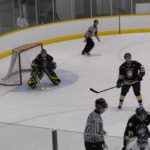What began as a seedling idea five years ago has now blossomed into a full-fledged and sustainable grassroots initiative in Cook County. Highlighting the need for change in the criminal justice system, restorative justice practices are part of a larger set of values that redefine crime as an act that affects an entire community rather than just the immediate victim(s). Restorative justice shifts the narrative from crime solely demanding a punishment handed down by a court system to repairing the harm caused through a cooperative process that involves all parties.
To be successful, a restorative justice program requires a different way of thinking about crime, and advanced buy-in from both the community at large and the government. In Cook County, all of these inputs exist. As the third program under the purview of the North Shore Health Care Foundation, the Cook County MN Restorative Justice program has an active advisory council that represents a wide swath of the community. Representation from the school system, law enforcement, local government, the prosecutor’s office, human services, and other locally-focused organizations ensures that the largest decisions benefit from a variety of perspectives and backgrounds. For Restorative Justice program coordinator and North Shore Health Care Foundation board member Inger Andress, this also addresses the resilience and strong foundation of the program.
“The key to the success of any program is the sustainability of it,” she says. “With collaboration from different organizations working together to keep the program sustainable, we can conquer the larger issues we may face.”
This is not Andress’ first project that is dedicated to nurturing healing on the North Shore of Minnesota. She also founded Choices and Voices, an initiative that coordinates multiple programs to bring about restorative healing to the Cook County community. After attending a presentation by UMD Professor Ted Lewis about restorative justice principles in 2016, her mission came even more clearly into focus. She obtained grant money in 2017 to bring Lewis to the community to train facilitators and by the fall of 2018 they were ready to start taking on cases.
Although each case involves unique circumstances and no single blueprint for a way forward, there is typically a general pattern. After a case is referred by law enforcement and the county attorney’s office, volunteer advocates meet individually with both the victim and the offender. This initial session is meant to be an open and honest dialogue, allowing the individuals to share their respective stories and feelings in a private session. If participants both decide that they are able to meet face-to-face, they then come together to share their individual perspectives on how they view the situation. Occasionally there are reparations requested by the victim(s) that the offender is obligated to follow through on.
Through sharing the understanding that “hurt people hurt people,” Andress’ overarching goal is to bring equanimity and respect to the community. The human-to-human connection can take people to a level of healing and repair that wouldn’t otherwise be possible.
“This is giving a safe space on learning how to work through conflict and deal with it respectfully and learn how to deal with the other side,” explains Andress. “We are helping victims learn that they are heard as well.”
Andress is also quick to acknowledge that the movement behind the program today is a culmination of the work of many others before her. For instance, many of the restorative practice principles have deep roots through generations of the Indigenous peoples. She notes that one of the major reasons restorative practices exists in its current form is because of the foundation laid by these traditional concepts.
The program continues to expand in its scope and outreach throughout the area. They have incorporated a “Snack and Chat” program in the upper levels of the ISD166 to allow students a time to come in and openly discuss fun and engaging topics with trained facilitators. In addition to preparing new volunteers at their annual training, they are planning to bring on a quarter-time paid case manager in 2022.
“We want to do well and build trust in the community with each case,” says Andress.
Other restorative justice programs in the area include those in Carlton County, Pine City, and the Moose Lake Prison. More information about the Cook County MN Restorative Justice program can be found on the North Shore Health Care Foundation website: northshorehealthcarefoundation.org.





